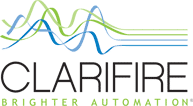Customer engagement is a dictum in the mortgage industry. We are all accustomed to the increased focus on the customer from a regulatory perspective, largely thanks to the creation of the Consumer Financial Protection Bureau (CFPB). Engaging the customer throughout the mortgage lifecycle is quickly becoming an essential factor of success. From pre-qualification through loss mitigation, understanding how to engage the changing face of the mortgage customer is on everyone’s mind.

Several sessions at the 2016 Mortgage Bankers Association’s (MBA) National Technology in Mortgage Banking Conference and Expo, focused on customer engagement, including Designing for the Customer Experience and The Changing Customer Experience. Tapping technology to solve business obstacles and ensure market reach were the underlying themes, with an emphasis on understanding what millennials expect from the mortgage experience. Not surprisingly, the smart phone was identified as a key means for interacting with millennials, as mobile phone apps and texting replace phone calls and emails.
A 2015 J.D. Power study found that there was a direct correlation between effective mortgage communication and customer satisfaction. Communicating through a mobile device provides immediate access to information and transparency, an important benefit to customers, allowing someone to access and status their mortgage at their convenience. One of the presenters expressed this approach as meeting “liquid expectations,” allowing customers to experience the mortgage process as both fluid and instantaneous.
Embracing new technology requires lenders and servicers to look at the process from a non-traditional perspective. Rethinking how the business flows from a customer perspective allows the mortgage entity to focus on the activities and data that necessitate customer interaction and more importantly those that don’t.
A wealth of verifiable data is available without repeatedly taxing the customer. Understanding this approach frees up the business to direct their attention towards strategy and operations, while customer interfaces become less encumbered and promote self-service. Conference panelists said some lenders and servicers are waiting too long to embrace a rapidly changing technology landscape. Many are not just concerned with the impact of cost, but with the complexity and amount of disruption involved in business transformation. However, industry players that are not prepared to embrace the use of big data and integration with multiple data lenders will quickly fall behind the competition.
Designing industry technology for the customer user experience is another fundamental element for success. Lenders and servicers should consider that current regulation, such as the Truth in Lending Act (TILA), Real Estate Settlement Procedures (RESPA) Integrated Disclosure (TRID) is not only complicated for the industry but also for customers. The ability to streamline processes benefits both sides of the transaction.
Challenge your design team to create a usable and engaging experience. Customers want to feel like communication is personalized and mindful of information that they perceive as available to the lender or servicer.
For example, information gathered earlier in the mortgage process, including customer details, product preferences and questions, should be presented back to the customer throughout the process. In a web environment, this gives the impression that the lender or servicer is “listening.” The opportunity for the customer to access “live chat” as they encounter obstacles or need clarification also promotes self-service, as well as customer satisfaction and confidence in the process.
Understanding how to engage customers through innovative technology is vital to success during these times of continued regulatory scrutiny and housing volatility. What is “innovative technology”? The key component must be workflow automation - providing a platform for modernizing the relationship between the mortgage lender and the customer, while still ensuring processes are conducted efficiently and within regulatory guidelines. Easy to use, fast response, bi-directional ways of making the customer happy.
Jane Mason
CEO



